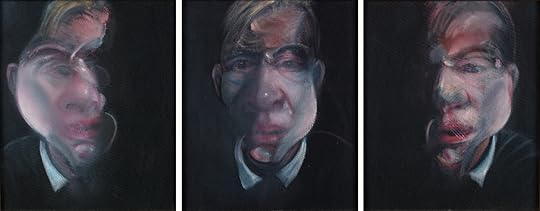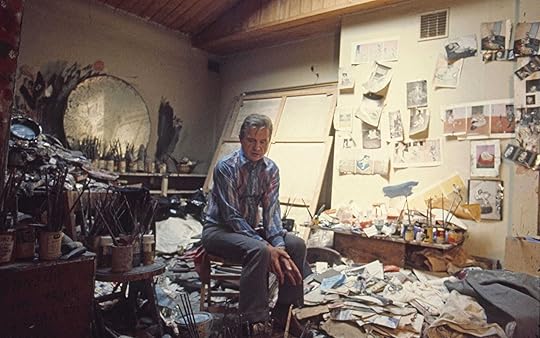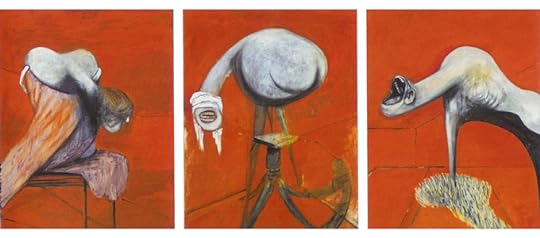What do you think?
Rate this book


80 pages, Hardcover
First published January 5, 2021

“This is my attempt to write as painting, not about it; an attempt to replicate thought, struggle, the struggle of thought, but also the sheer energy of the eye’s confrontation with the painted image. It’s the result of a long preoccupation I’ve had with Francis Bacon and I hope that, even though it is a book about death, it’s very much a living thing.”
Take a seat why don’t you, but I’m still asleep so she doesn’t hear. Nice familiar weight at the foot of the bed, the sort of fever guest weight, aunt or mother, nurse, or the after-fuck check-up, to tuck me in, still a little whiff of hurt in the room, of procedures. Rather wonderful actually, to be reminded of childhood sickness and post-coital exhaustion in the same second. Rather comforting. Close.
Take a seat why don’t you.
I heard you before, piggy.

No, not this time. I want you lost, lover and critic kicked off the gum jetty at the end of the triptych licked or on your knees, back to me saying Please, I did it to hurt you, to spoil Paris, and me saying CAN’T HEAR YOU, I did it because it was easy, your profile, cut out, ready, and everyone else was dying and I had a horrid stabbing realistic knack of surviving. Endless errors, no confusion, gag me, stop me speaking thinking about you, stop me working.
One two three. Nothing but pain.
Sí.
I’m die-ready.
Sí. Soon, piggy.
Intenta descansar.

The century abandoned me at dusk. I panicked and added more newsprint. Crappy friends leaving me, crappy artists, crappy bitter aphorisms pouring out of me, plasticky surgery belches, dapper, bandaged, trashed, honestly I behaved horribly. I’ve been lost a bit. It’s just dying, finally. Pity me, up and lead the dance of fate.

It’s an attempt to express my feelings about a painter I have had a long unfashionable fixation with. It’s an attempt to get art history out of the way and let the paintings speak. It’s an attempt to hold catastrophe still so you can get a proper sniff at it.
You look well Aelfryth, you look well Edward, long ride, good day, strong wind, sea air, here, some beer, a long gladdening gulp of gold, the colour of the stone, strange look, first cold, extremely cold and makes him think of river swims and soiling his sheets, shock, shame, the wet sock game, being stabbed is the same, extraordinary pain, the colour blue, lapis right through him, and then again and again and she’s walking back into the castle and he’s dripping venison memory, white fat and clicking, smoke, dripping onto the stones, trying to turn and see where the hurt is, caught in the stirrup and upside down, crack on the skull metal thump in the side in a brawl with the pages, again, crack again, black, bits of his brain scattered on the track thumping down the hill down the hill down the hill and into the river Corfe, last thought is of the beer, wasted, where is the cup, we are concerned with those who notice the cup, yes the dead king, yes politics, meat and temporality, but also the well-made cup, perched body ripe and crucial on the road.
Last sight isn’t human after all, is pure throb colour on the heart inside.
Get some distance, stand back, six feet, no glass, no label, no price list, no body, no gallerist. Just the painting. Seal the lid. Is pure throb colour on the heart inside.
No more.
Is pure throb colour on the heart inside.
Sí. Intenta descansar.